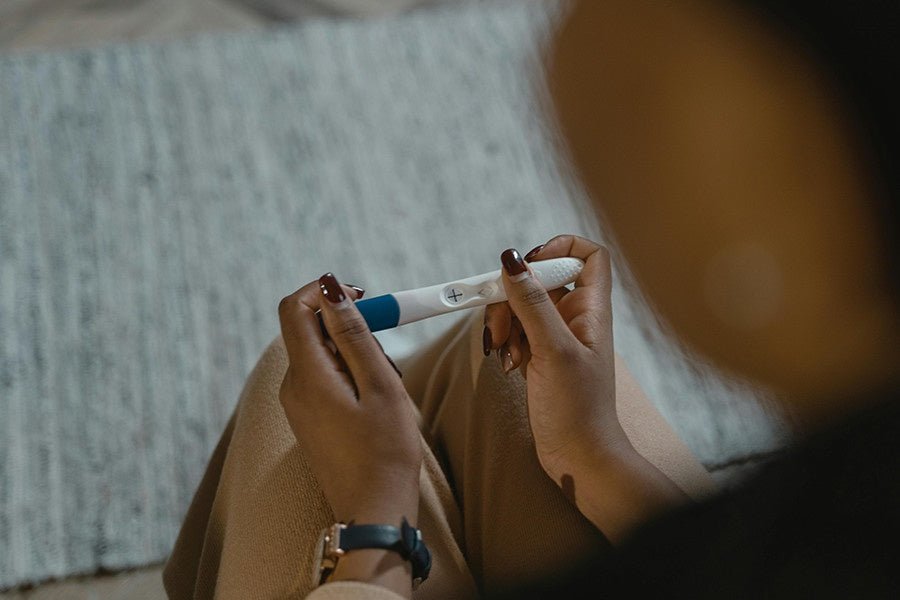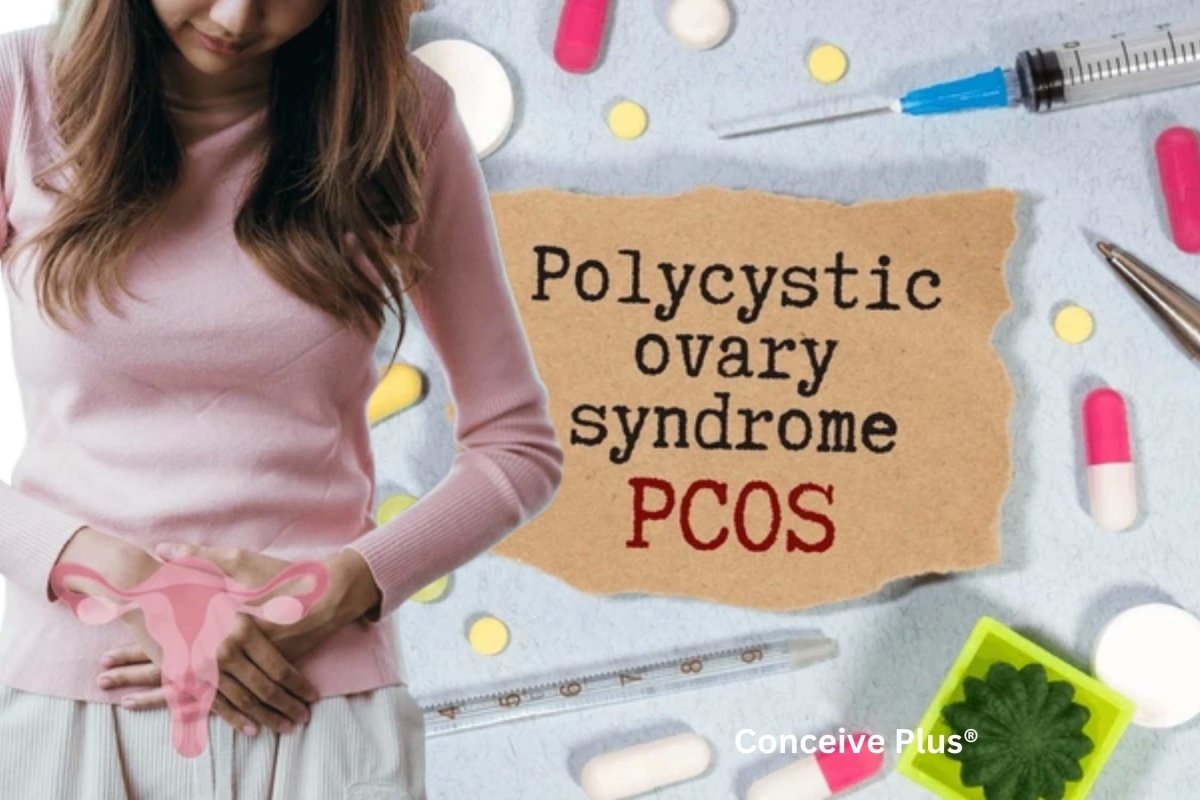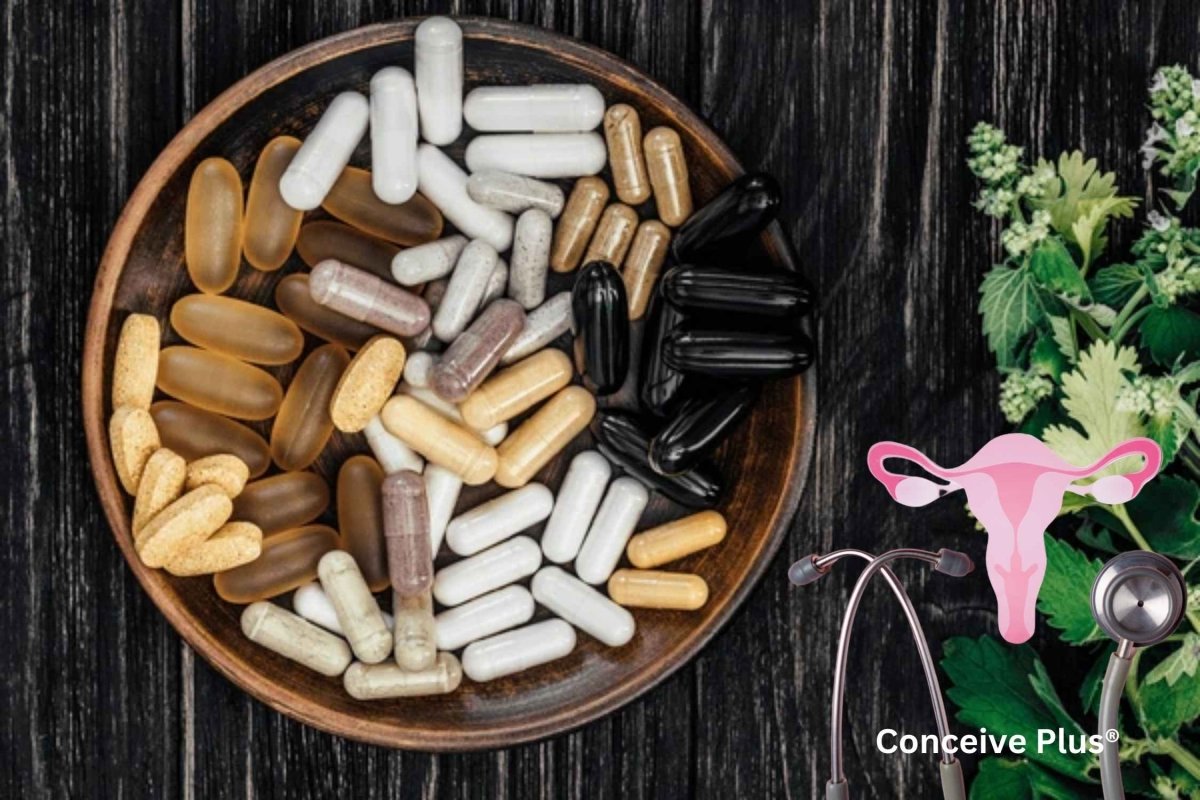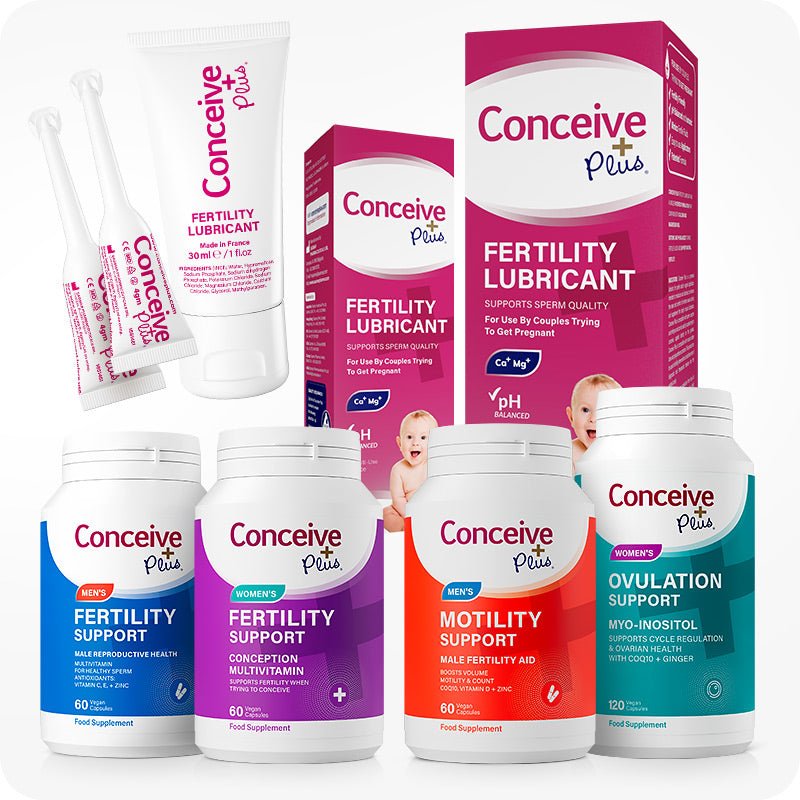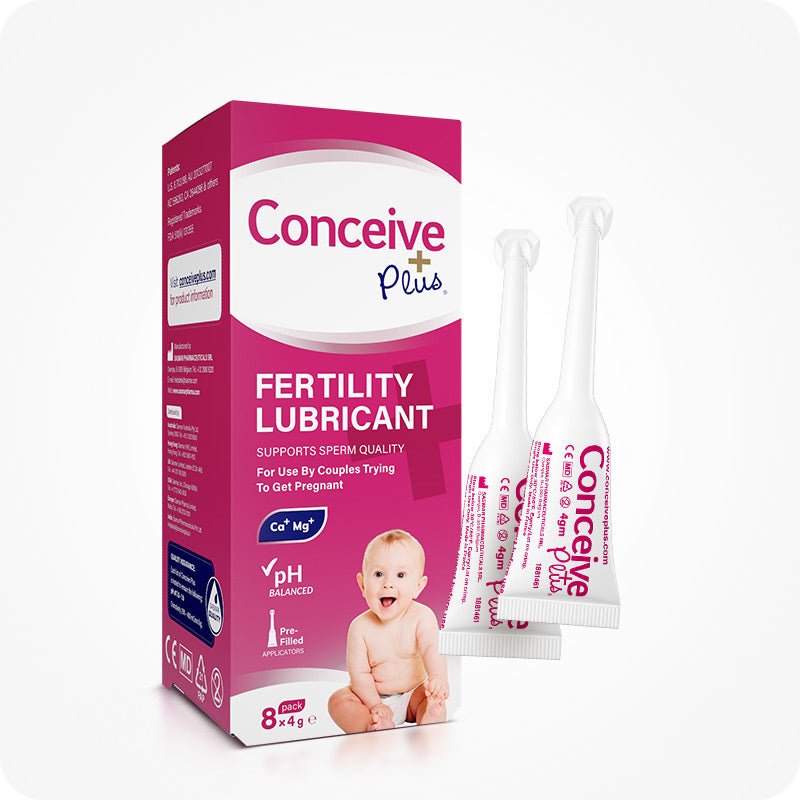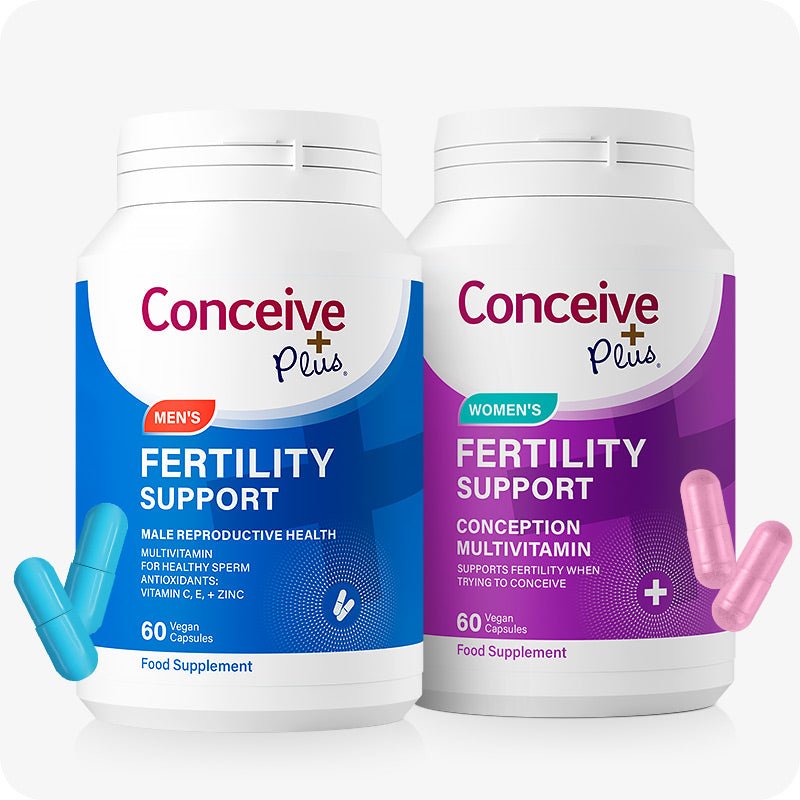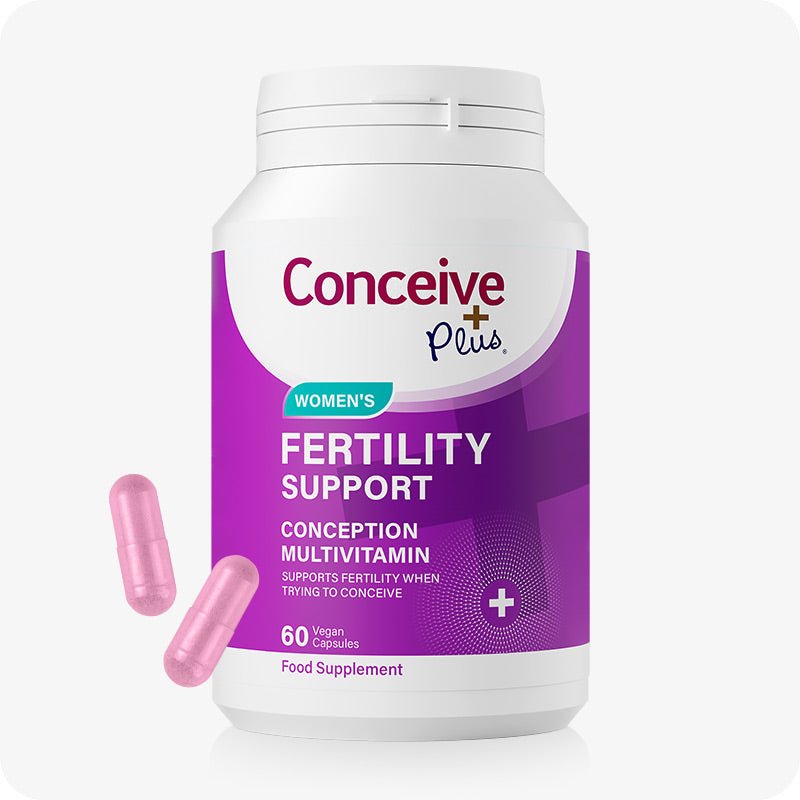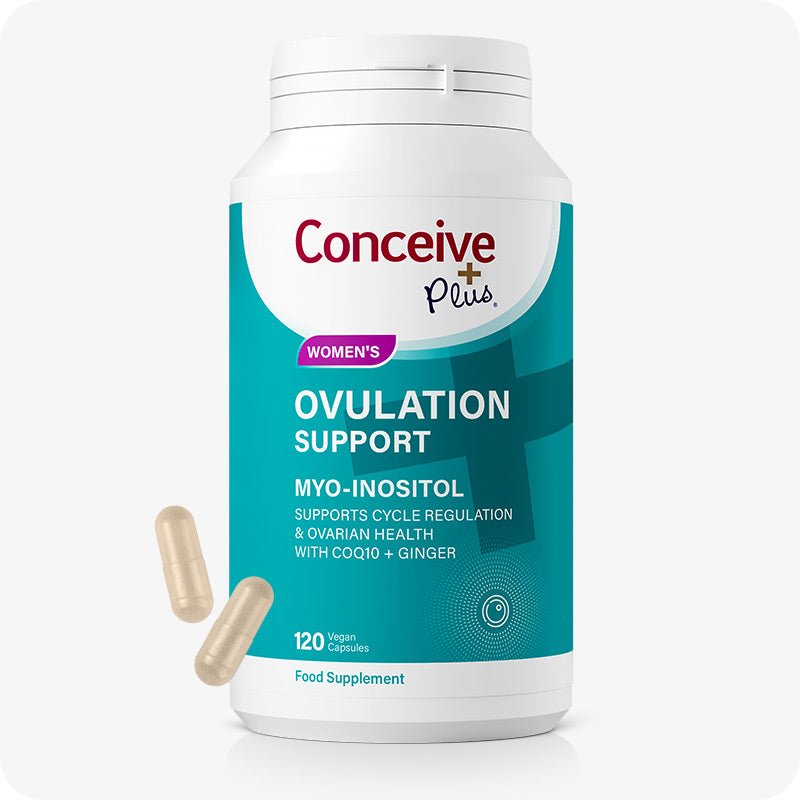Ovulation and Blood: Is it Common to Bleed During Ovulation?
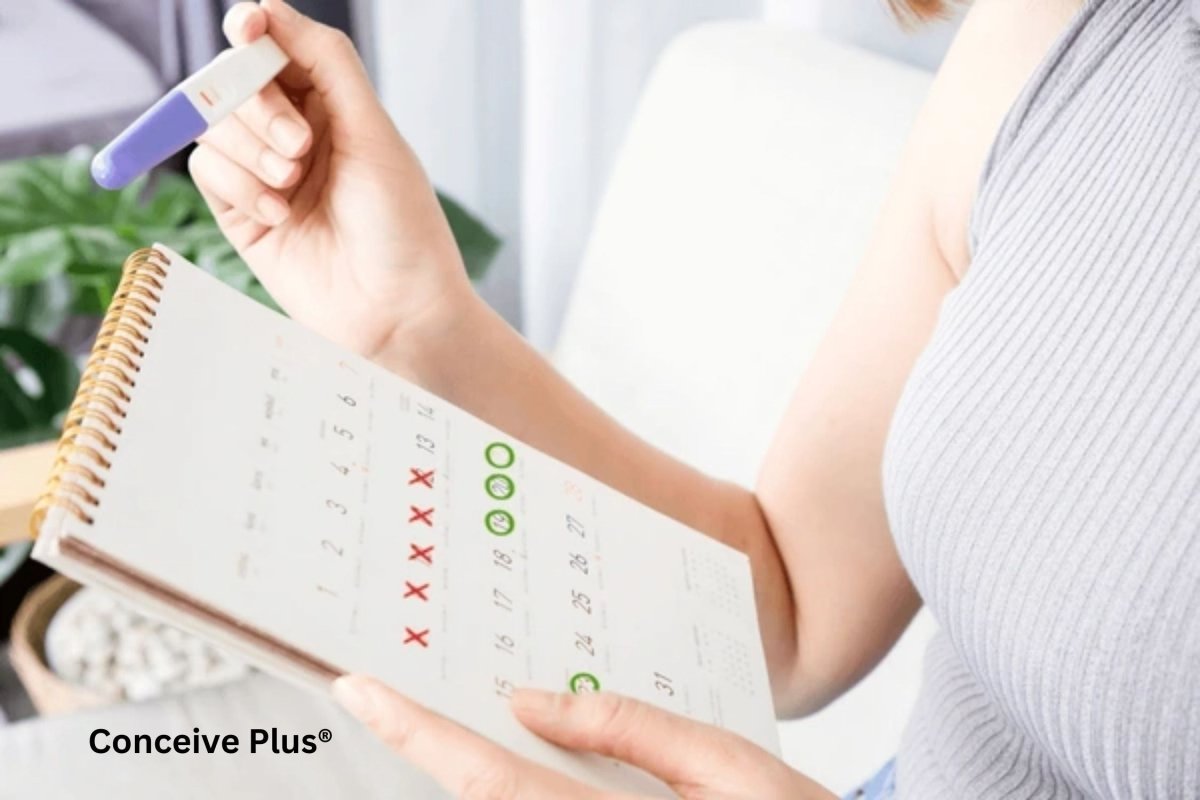
Whether you are trying to conceive or understand your menstrual cycle, ovulation and blood happening together might raise concerns. The good news is that some light bleeding when ovulation occurs is normal and rarely something to worry about.
Severe bleeding from ovulation, however, typically indicates an underlying issue, particularly if accompanied by intense or bad ovulation pain.
Read on, to understand when ovulation bleeding is normal, what sort of pain is expected during ovulation, and how recognising common ovulation symptoms can help you to get pregnant.
Ovulation Explained
Ovulation normally occurs each month about midway through the menstrual cycle [1]. For women with a regular 28-day cycle, ovulation happens between days 11-16. However, the foundations for ovulation to occur already start after the first day of menstruation when oestrogen and follicle-stimulating hormone (FSH) production increases.
In preparation for ovulation, FSH encourages the ovaries to start producing eggs inside follicles and rising oestrogen levels prepare the endometrium (uterus lining) for the fertilised egg to implant.
11-16 days after menstruation, elevated oestrogen levels signal luteinising hormone (LH) to rise. This rise in LH prompts the strongest follicle on the ovary to rupture and release a mature egg into the fallopian tube where it can live for 12-24 hours waiting for sperm to fertilise it.
Once the mature egg is released, the ruptured follicle on the ovary forms a mass of cells known as the corpus luteum from which progesterone is produced to support early pregnancy and foetal development [2].
Ovulation is completed when the egg enters the fallopian tube and the corpus luteum forms.
Can Ovulation Cause Cramps?
Yes, cramping during ovulation is quite common and ranges from mild to intense, depending on the woman. It typically occurs on one side of the lower abdomen, depending on which ovary is ovulating.
Although pain when ovulating is normal, severe ovulation pain is not. If you are experiencing intensely painful ovulation and irregular menstrual cycles, it’s wise to book a consultation with an OB/GYN to understand why.
What Are The Most Common Symptoms of Ovulation?
Most women experience symptoms in the days before ovulation and the day that the ovary releases the egg. However, symptoms vary in their severity, with some women feeling only mild signs of ovulation, while others notice them more intensely.
The most common symptoms linked to ovulation include:
- Breast tenderness or nipple pain
- Egg White Cervical Mucus (EWCM)
- Slight rise in basal body temperature (BBT)
- Bloating
- Spotting
- Cramping or pain in the lower abdomen
What Does Ovulation Pain Feel Like?
As mentioned above, only one ovary releases an egg each month and the female reproductive system intuitively knows to alternate from one to the other. Because of this, ovulation pain is generally located on one side of the lower abdomen, depending on which ovary is ovulating.
Medically referred to as mittelschmerz, ovulation pain often feels like a sharp or crampy pain on one side of the lower abdomen. Often called mittelschmerz ovulation, the mid-cycle discomfort can sometimes be accompanied by ovulation period bleeding, which is typically harmless. Although cramping around ovulation hurts some women, ovulation cramps are generally mild and subside as soon as ovulation has occurred.
In some cases, women worry when they experience cramping during ovulation and blood shows up on their underwear. However, as explained below, this is usually nothing to worry about.
If you're wondering 'will ovulation test be positive if pregnant,' explore our guide 'Will Ovulation Test Be Positive If Pregnant? Understanding The Journey Of Pregnancy' for a comprehensive explanation.
Is Bleeding During Ovulation Normal?
Although blood and ovulation may seem ominous when they happen simultaneously, spotting during ovulation is quite common. Many women notice blood during ovulation and may worry about bleeding ovulation, but in most cases, this light bleeding is a normal part of the cycle. Oestrogen levels decrease once ovulation occurs and progesterone levels rise. This change in hormone levels is known to cause the show of ovulation blood.
That said, ovulation spotting typically only occurs mid-cycle. It is usually light as opposed to heavy or painful, and it subsides after 1-2 days.
If you experience heavy vaginal bleeding during ovulation and pain that does not subside, schedule a consultation with your doctor for further analysis [3]. Heavy bleeding during ovulation is sometimes a sign of fibroids or polyps that require removal.
If you have concerns about ovulation pain and pregnancy success, it's also a good idea to consult with your doctor or OB/GYN.
Endometriosis and Ovulation Pain
Endometriosis is a female condition where tissue similar to the uterus lining grows outside the uterus [4]. This abnormally growing tissue is known to form lesions on the ovaries, fallopian tubes and between organs within the pelvic cavity.
Unfortunately, women with endometriosis often experience increased pain during ovulation and menstruation. This is because the misplaced endometrial-like tissue behaves like the uterus lining, meaning it thickens during ovulation in preparation for the implantation of an egg.
This can cause inflammation and more intense pain when women with endometriosis ovulate. For those with conditions like endometriosis, endometriosis ovulation pain may intensify typical ovulation pain symptoms, although experiencing spotting during ovulation good sign can indicate normal hormonal shifts.
When pregnancy does not occur, endometrial lesions bleed just like the uterine lining, however, the blood is not shed through the vagina via menstruation. Instead, it forms scar tissue and adhesions that result in additional pain and added discomfort during menstruation.
Other symptoms of endometriosis include:
- Painful cramps during ovulation
- Lower back pain
- Pain during sex (dyspareunia)
- Heavy menstrual bleeding
- Irregular menstruation
- Painful menstrual cramps
- Spotting between periods
- Fertility issues
- Painful bowel movements
Irregular Cycles and Ovulation
Fertility specialists widely recognise that it is more difficult for women with irregular menstrual cycles to track ovulation. This inadvertently makes it more challenging for them to get pregnant.
Women with endometriosis or polycystic ovary syndrome (PCOS) [5], for example, often experience irregular cycles. In these cases, a natural supplement called inositol is known to help the endocrine system rebalance hormones, regulate ovulation, and enhance the quality of eggs to improve the chances of conceiving.
In addition to boosting the endocrine system, inositol is also prescribed to improve mental health and metabolic wellness. Brands with a 40:1 ratio of Myo-inositol and D-chiro inositol have proven the best blend of inositol for regulating ovulation and improving fertility [6].
If you're also experiencing ovulation bloating and want to learn practical tips to alleviate it, check out our guide 'Ovulation Bloating: Why it Occurs & How to Relieve It' for more expert advice.
The Bottom Line
Experiencing ovulation with bleeding is normal as long as it’s light, is not accompanied by severe pain, and doesn’t last more than a few days. Ovulation and blood spotting are typically linked to the drop in oestrogen and the simultaneous rise in progesterone as soon as an egg is released from the ovary.
Although some ovulation discomfort can manifest as lower abdominal cramping on one side, pain during ovulation is typically mild, tolerable, and passes within a few hours or days. It's important to ask your doctor, because if when you feel ovulation pain is it too late to intervene, early advice can help manage symptoms before they worsen. Should you experience intense pain or significant bleeding, ovulation symptoms may have worsened due to an underlying condition like endometriosis, fibroids, or PCOS.
In these cases, inositol supplements can help regulate the menstrual cycle and improve ovulation and fertility. However, it's always best to consult with your doctor before adding any new medication or supplements to your routine.
References
- Mayo Clinic - Ovulation Signs to Watch for If I Want to Get Pregnant - https://www.mayoclinic.org/healthy-lifestyle/getting-pregnant/expert-answers/ovulation-signs/faq-20058000
- Medical News Today - Corpus Luteum - What is a corpus luteum? - https://www.medicalnewstoday.com/articles/320433#what-is-the-corpus-luteum
- Medical News Today - What to KNow about Ovulation Bleeding or Spotting - https://www.medicalnewstoday.com/articles/325847#identification
- Cleveland Clinic - Endometriosis - https://my.clevelandclinic.org/health/diseases/10857-endometriosis
- NHS - Ovary Syndrome - (PCOS) https://www.nhs.uk/conditions/polycystic-ovary-syndrome-pcos/treatment/
- National Library of Medicine - Efficacy of myo-inositol and d-chiro-inositol combination on menstrual cycle regulation and improving insulin resistance in young women with polycystic ovary syndrome - https://pubmed.ncbi.nlm.nih.gov/34624138/






